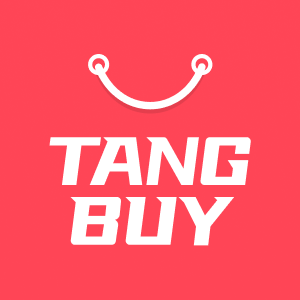AI-Powered Dropshipping: How to Automate Product Sourcing in 2025
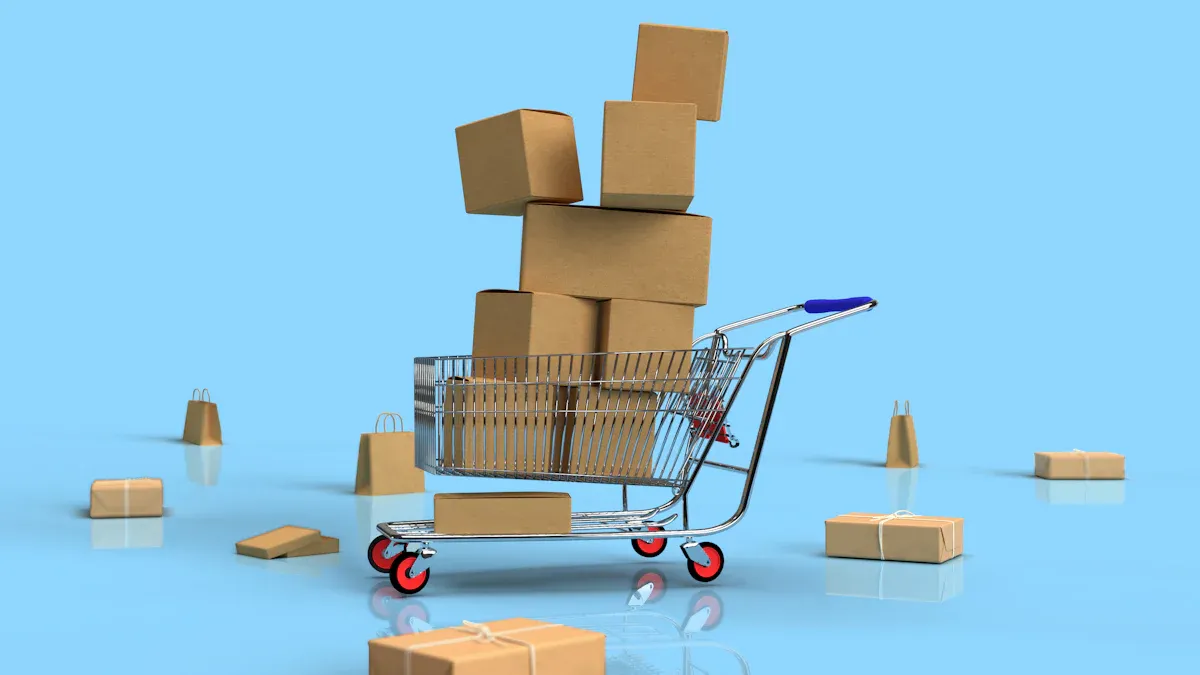
AI-Powered Dropshipping in 2025 helps you find products fast. You only need a few clicks to do this. You save a lot of time and avoid big mistakes. AI tools can make order processing up to 80% faster. Here is a quick look at how the industry is growing:
Metric | Statistic |
|---|---|
Dropshipping software market (2025) | |
Automation cost savings | |
Retailers using dropshipping | Over 27% |
Now, you can use all-in-one platforms for everything. They help with research and inventory. This lets you grow your business faster and focus on success.
Key Takeaways
AI tools help you look for products fast. They let you find popular items before other people do.
Automation does jobs for you, like handling orders and prices. It also updates stock so you do not have to do it yourself.
Smart platforms link you to good suppliers all over the world. They keep your inventory matched up and correct.
Dynamic pricing uses AI to help you set fair prices. It helps you keep your profits safe.
AI chatbots make customer support better. They answer questions quickly and work all day and night.
Marketing tools make ads and special offers for each customer. These tools help you sell more and save time.
First, find out which jobs you want to automate. Pick the best AI tools and test them well.
Use AI automation but also check things yourself. This helps you stay in control and stop mistakes.
AI-Powered Dropshipping Overview

What Is It?
AI-Powered Dropshipping in 2025 lets you run your online shop with smart technology. The system does most of the hard work for you. You do not need to spend hours looking for products or checking stock. AI tools help with product research, supplier management, pricing, and customer support. You get updates right away, quick order processing, and smart tips for your shop.
AI-Powered Dropshipping platforms link you to suppliers from all over the world. You can control everything from one dashboard. These platforms use AI to watch trends, match inventory, and set prices. You can also use AI chatbots to talk to customers. Some platforms send orders to other suppliers if one runs out of stock, so you never lose a sale.
Here’s a simple look at how the top platforms stack up:
Platform | User Adoption (Reviews & Rating) | Key Automation Features | Unique Strengths | Pricing Highlights | Support & User Base |
|---|---|---|---|---|---|
DSers | 29,000+ reviews, 5.0/5 rating | Bulk order processing, automated tracking, price & stock sync, supplier optimisation, multi-store management | Leading AliExpress automation, advanced mapping, affiliate programme | Free tier (limited), paid plans up to $49.90/month | Multi-language (6), high-volume operators, global network |
Zopi | 2,400+ reviews, 4.8/5 rating | Bulk import, AI-generated descriptions, price history tracking, stock sync, automated fulfilment | Multi-marketplace integration, trending product collections, competitive pricing | Free basic, advanced automation at $49.90/month | Multi-language (5), personal coaching, new & international sellers |
AutoDS | 11,000+ reviews, rating ~4.8/5 | One-click imports, bulk editing, price monitoring, stock sync, automated fulfilment, POD integration | Combines dropshipping with print-on-demand, extensive supplier network | Free API, paid plans from $26.90 to $66.90/month | Multi-language, educational resources, mentorship, global scalability |
10,000+ reviews, 4.8/5 rating | Auto-fulfilment, product linking, custom branding, unlimited imports | Professional dropshipping expertise, large product catalogue, educational coaching | Pricing details less specified | Support and coaching, growing user base |
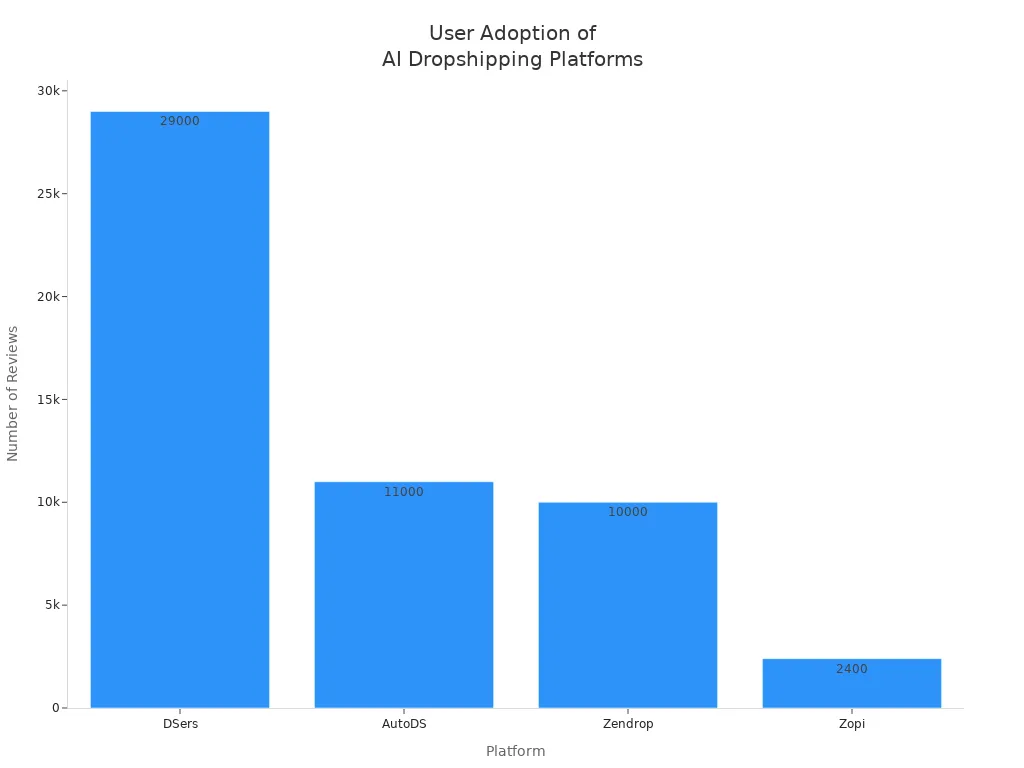
Key Benefits
You get many benefits when you use AI-Powered Dropshipping. First, you save time. The system finds products, changes prices, and checks stock for you. You do not need to worry about missing trends or running out of popular items. AI keeps your shop working well, even when you are not online.
Here are some main advantages:
Automation: You can set up order fulfilment, inventory updates, and customer chats to run by themselves. The platform sends orders to other suppliers if one runs out, so you do not get delays.
Efficiency: AI checks prices and stock often. You get alerts if something changes, so you can act quickly.
Scalability: You can handle lots of products and suppliers at once. The system helps you grow your business without extra work.
Reduced Manual Work: You do not need to check every order or message. AI does simple jobs, so you can focus on bigger plans.
Smart Analytics: Dashboards show which products sell best and suggest new items to add. You get advice to help your sales.
Reliable Infrastructure: Most platforms promise almost no downtime. You do not lose sales during busy times.
Tip: Try using AI-powered product research tools like Jungle Scout or Sell The Trend to find popular products before others do.
You also get access to suppliers and marketplaces from around the world. Platforms like DSers and AutoDS link you to AliExpress, Shopify, and WooCommerce. You can reach customers everywhere and offer lots of products.
AI-Powered Dropshipping gives you more control and less worry. You can run your shop in a smarter way.

Product Research
AI Tools
You want to find good products before others do. AI tools help you do this quickly. These platforms look at millions of products and spot trends. They show you which items sell the most. You can use smart filters to search by shipping time, price, or supplier rating. Some tools even write product descriptions for you. This saves you time and effort.
Here’s a table with top AI tools and what they do:
AI Tool / Feature Category | Description / Capabilities |
|---|---|
AliExpress Automation Tools | Scans for winning products, detects trends, calculates profit margins, analyses competitors |
Smart Filtering Capabilities | Custom filters for shipping, price, supplier ratings, order volume |
Content Generation Tools | Creates product descriptions, SEO titles, keywords, and translations |
Personalisation Features | Gives niche recommendations, trending alerts, saved searches, dashboards |
Supplier Discovery AI Tools | Checks supplier metrics, fulfilment rates, risk scores |
Syncee GPT | Uses ChatGPT for descriptions, trend analysis, and recommendations |
Sell The Trend | Finds winning products, offers analytics, competitor insights |
Spocket | Connects with US/EU suppliers, matches products to your niche |
Glitching AI | Hunts for products, calculates profits, analyses trends |
Minea | Analyses customer behaviour, optimises product selection |
Trend Prediction Features | Tracks market demand, social sentiment, forecasts seasons, maps geographic demand |
Pricing Optimisation Features | Adjusts prices, protects margins, matches prices, sets demand-based pricing |
Dropshipping Automation Tools | Syncs orders, tracks inventory, manages marketing content |
These tools help you make better choices and save lots of time each week.
Trend Analysis
AI tools do more than just find products. They help you spot trends before they get big. You get alerts about products getting popular on social media and online shops. These systems look at sales numbers, reviews, and activity on TikTok and Instagram. You can see which products are becoming popular and which are not.
It watches real-time demand, social media buzz, and busy seasons.
You get tips for pricing and marketing using up-to-date data.
Platforms like Sell The Trend and Minea mix market checks with competitor research.
TikTok Viral Ads Explorer shows which products get lots of views and sales.
Tip: Look for products that grow slowly and steadily, not just those that go viral. AI helps you skip items that seem popular but do not really sell.

Product Selection
Picking the right product is very important in AI-Powered Dropshipping. AI tools use Google Trends to check what people are searching for and spot busy seasons. You can compare products and see which ones stay popular for longer. For example, you might see more searches for “Christmas decorations” in November and December. This helps you plan your stock and adverts.
TikTok analytics show which products get lots of likes and real sales. You can see examples like SnapShade (car sunshade) or TrimEase Pro (grooming tool) trending on TikTok. AI tools also check profit margins and conversion rates. This helps you pick products that make money, not just get likes.
Here’s how you can use these ideas:
Tool / Method | Description | Example Products / Use Case |
|---|---|---|
Google Trends | Watches search interest, compares words, finds busy and niche demand | Christmas decorations, eco-friendly pet products |
TikTok Analytics & AI Tools | Looks at ad signals, engagement, checks sales, checks if products make money | SnapShade, TrimEase Pro, StyleFusion Pro |
Competitor Analysis | Studies top shops, finds niche gaps, tracks trending items | Gaming accessories, organic beauty items |
You get a clear view of what works and what does not. AI helps you pick products with real demand and good profit chances.

Supplier Management
Supplier Vetting
Picking good suppliers is very important for your dropshipping shop. AI-Powered Dropshipping helps you choose the best ones. You do not have to guess who is good. AI checks how fast suppliers deliver and if their prices are fair. It also looks at what customers say about them. The tools compare lots of suppliers at the same time. You get advice based on real facts, so you do not make big mistakes.
AI watches how well suppliers do their jobs. It checks things like shipping speed and how many orders they finish. It also reads customer reviews. You can see scores that show if a supplier is risky or reliable. AI keeps checking suppliers all the time. This means you can fix problems before they hurt your customers. This way, your supply chain stays strong and steady.
Tip: Try using AI supplier discovery tools. They help you find good suppliers much faster than searching by yourself.
Inventory Sync
AI makes it easy to keep your stock up to date. You do not need to check every item by yourself. AI-powered platforms link your shop to suppliers and update stock right away. If something sells out, it disappears from your shop. If a supplier changes a price, your shop changes too.
Here is how inventory sync helps you:
Feature | What It Does |
|---|---|
Real-time Inventory Syncing | Changes stock numbers everywhere right away |
Intelligent Order Routing | Sends orders to the best supplier for price and speed |
Multi-Channel Synchronisation | Keeps stock the same on Shopify, Amazon, WooCommerce, and more |
Automated Alerts & Audits | Warns you if stock is low or there is a problem |
You can set extra stock to stop selling too much. The system checks for mistakes and tells you if something is wrong. This means you make fewer errors and do less work.
Communication
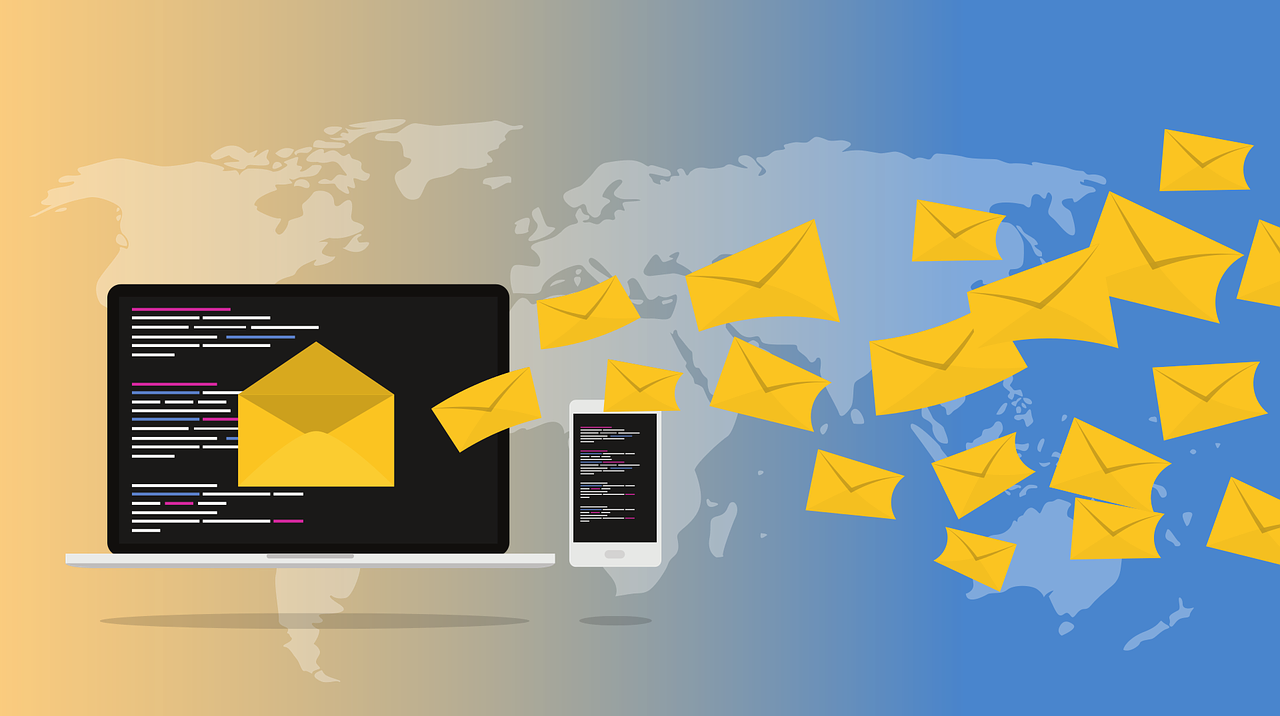
AI makes it easy to talk to suppliers and keep customers updated. Order tools place orders and track packages for you. You get messages when something changes with an order. Customers get updates too, so they always know where their package is.
AI chatbots help answer questions fast. You can spend more time growing your shop. The system takes care of simple messages. Dropified and Spocket are two platforms that help with this. Dropified works with over 50 suppliers and does product imports, order processing, and tracking. Spocket works with US suppliers and makes product management easy, but has fewer automation tools.
Platform | Supplier Integration | Order Processing Features | Product Management Tools |
|---|---|---|---|
Dropified | 50+ suppliers, one-click import | Automated order processing, tracking, bulk editing | Advanced variant mapping, bundles |
Spocket | US/EU suppliers, easy import | Basic order automation | Simple product management |
AI-Powered Dropshipping tools help you work well with suppliers and keep your shop running smoothly.
Pricing and Inventory
Dynamic Pricing
You want your prices to be fair and make money. AI-powered tools help you do this easily. These systems watch the market all the time. They check what your competitors charge and what your suppliers cost. They also look at what customers want right now. You do not need to guess or spend hours changing prices.
Here is how AI helps with pricing:
AI tools change your prices quickly using market data and demand.
You get alerts if a competitor changes their price or if a product gets popular.
Automation tools like Flxpoint update your prices to keep your profits safe.
AI can stop price fights by suggesting extra offers instead of lowering prices.
You can set rules so your prices never go too low, even if the market changes fast.
AI systems watch supplier costs and help you act fast during busy times.
Tip: Dynamic pricing can help you earn up to 25% more profit. Some dropshippers have seen sales go up by 30% after using AI-powered pricing.
AI also looks at old sales, social media buzz, and search trends. This helps you know when to change prices. You can match prices with others or make your own plan. The best part is you save time and make fewer mistakes.
Stock Tracking
Keeping track of your stock can feel hard. AI makes it easy. You always know what you have and what you need to order. The system checks your suppliers’ stock and updates your shop right away. If something sells out, your store hides it or switches to another supplier.
Here are some top AI tools for inventory tracking:
AutoDS – Places orders, watches prices, and syncs inventory.
DSers – Works with AliExpress and lets you process orders with one click.
Ecomdash – Tracks inventory on many channels and sends orders to the right place.
Inventory Source – Syncs inventory with smart filters and automation rules.
Sellbery – Connects to different marketplaces and updates stock with smart automation.
You can also use tools like Stocky, Spocket, Syncee, and DSM Tool. These platforms update your listings quickly and send alerts if stock is low. They even pause products if they are out of stock everywhere.
AI Solution | Key Inventory Features |
|---|---|
Stocky | Suggests how much to restock using sales data and lead times |
Spocket | Syncs real-time inventory from US/EU suppliers |
Syncee | Updates prices and stock quickly, hides products that are not available |
DSM Tool | Watches supplier inventory and pricing, updates listings automatically |
AI also guesses demand by looking at old sales, busy seasons, and upcoming promotions. You get fewer stock problems and happier customers. You can focus on growing your business while AI keeps your inventory safe.
Order Fulfilment
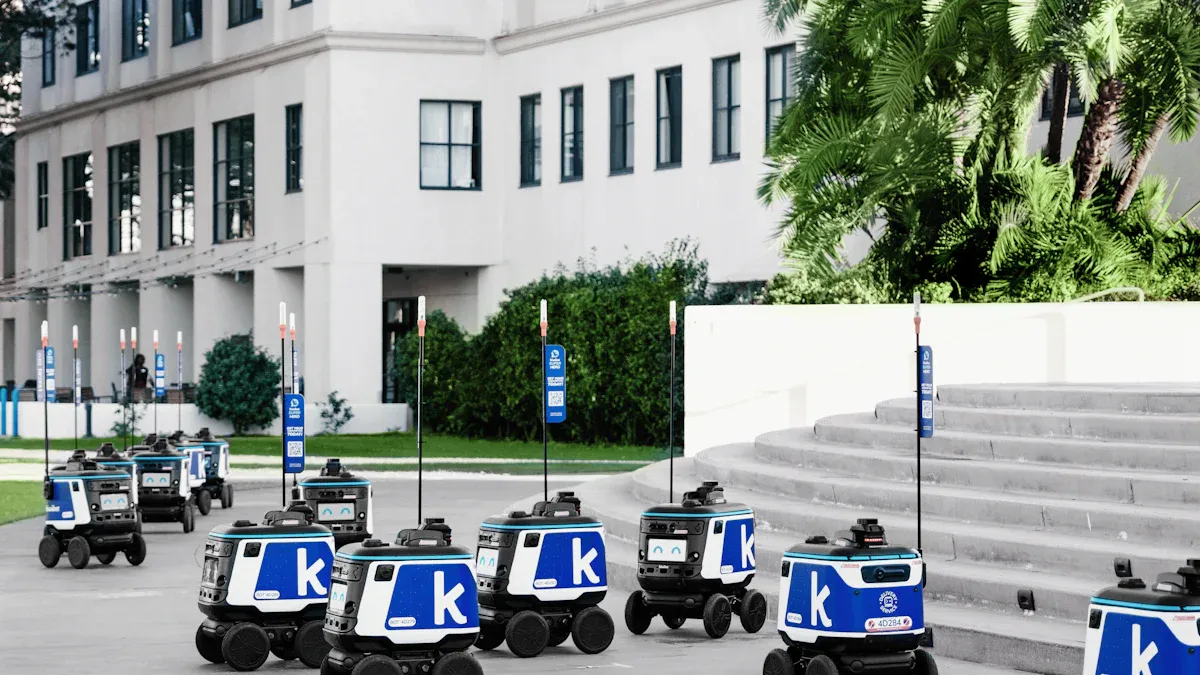
Automation
AI helps with order fulfilment, so you do not worry about mistakes. When someone buys something, the system sends the order to the right supplier. You do not need to copy details or check stock yourself. AI checks which supplier has the item and picks the closest one. This makes orders arrive faster and shipping costs less.
You can handle more orders without extra effort. The system can split orders between different suppliers if needed. It also updates your stock right away, so you never sell out-of-stock items. Here is what AI automation gives you:
The system stops human mistakes by doing jobs for you. You do not send the wrong item or run out of stock.
Automated order routing makes things quicker. Customers get their orders sooner, so they are happy.
Real-time stock management stops you from selling too much. Your shop works better.
Tools like Flxpoint update stock, send orders, and change products for you. You save lots of time each week.
AI uses smart guesses to know what will sell soon. This helps you keep enough stock and waste less.
You can grow your business easily. The system handles more orders without needing more staff.
With automation, you fix fewer mistakes and have more time to grow your shop.
Tracking
AI does not stop after sending the order. It also follows every package from the supplier to your customer. You and your customers can see where the order is at any time. This helps people trust your shop and keeps everyone updated.
AI tracking systems show you everything. You get alerts if there is a delay or problem. The system updates your shop and tells your customers what is happening. This means fewer questions and less confusion.
The system sends quick updates if anything changes with delivery.
AI does jobs like updating stock and sending shipping alerts. You do not need to check every order.
The system makes many small choices every day. It changes to match demand, supplier speed, and delivery times.
The system learns which suppliers are best and uses them more.
Automated tracking saves you time and helps you avoid lost sales. Your customers stay happy because they always know where their order is.
With AI, order fulfilment is easy, quick, and dependable. You can focus on building your brand while the system does the rest.
Customer Support & Marketing

Chatbots
You want your customers to get answers fast. AI-powered chatbots make this possible. These smart helpers work all day and night, so your shop never sleeps. When someone asks about an order or needs help, the chatbot replies instantly. You do not have to answer every question yourself. This saves you time and keeps your customers happy.
Many dropshipping brands use chatbots like Zendesk and Tidio. These tools handle common questions, track orders, and even give updates about stock. They connect with your shop’s systems, so the answers are always correct. You can also offer support in different languages, which helps you reach more people around the world.
A Shopify dropshipping brand saw an 18% jump in customer satisfaction after adding a chatbot. Order processing times dropped by 12% in just three months. Chatbots also help reduce cart abandonment. When shoppers get quick answers, they feel more confident and finish their purchases.
Tip: Use a chatbot to answer FAQs, track orders, and recommend products. This frees up your time for bigger tasks.
AI Ad Creation
Marketing can feel like a lot of work, but AI makes it easier. You can use tools like Jasper, AdCreative.ai, and Ocoya to create ads, write product descriptions, and even make videos. These tools suggest new ideas, test different versions, and find out what works best. You do not need to hire a big team or spend hours writing copy.
AI ad creators help you match your message to each platform. For example, you can make one ad for Facebook and another for TikTok, each with the right style. Tools like AdCreative.ai test hundreds of ad versions quickly. You see which ones get the most clicks and sales. Pictory AI can turn your product reviews into short videos that grab attention.
Here are some ways AI ad tools help you:
Suggest new audiences and creative ideas to boost your ad results.
Write SEO-friendly product descriptions and landing pages.
Automate email marketing, sending the right message at the right time.
Test and improve ads fast, so you keep up with trends.
You save time and money, and your ads work better. Some shops have seen conversion rates go up by 27% after using AI to write landing pages.
Personalisation
Personalisation makes your customers feel special. AI studies what people look at, what they buy, and what they search for. Then, it shows them products they are likely to want. You can send emails with their name, suggest items based on past orders, or offer discounts just for them.
AI-driven recommendations help you sell more. If someone buys a phone, the system might suggest a case or charger. You can also use AI to set prices that match demand, so you never miss a sale. Real-time data lets you offer flash deals or special offers when shoppers are most interested.
Here’s how you can use AI for personalisation:
Feature | What It Does |
|---|---|
Product Recommendations | Suggests items based on browsing and purchase history |
Personalised Emails | Sends offers and updates tailored to each customer |
Dynamic Pricing | Adjusts prices using sales data and trends |
Upselling and Cross-selling | Offers related products to increase order value |
Machine learning keeps getting smarter. Your marketing becomes more accurate over time. Some shops even use voice or AR features for a unique shopping experience. With AI, you build trust and keep customers coming back.
Implementation Steps

Task Identification
You want to start with a clear plan. First, look at your dropshipping business and spot the tasks that take up most of your time. These could be product research, pricing, inventory checks, or customer support. Write down the jobs you do every day. Think about which ones you find boring or slow.
Ask yourself these questions:
Which tasks do you repeat often?
Where do mistakes happen most?
What stops you from growing your shop faster?
You can use a simple table to map out your pain points:
Task | Time Spent | Mistakes | Impact on Growth |
|---|---|---|---|
High | Medium | High | |
Inventory Tracking | Medium | High | Medium |
Pricing Updates | Medium | Low | High |
Customer Support | High | Medium | High |
Once you know your pain points, set clear goals. Maybe you want to save two hours a day or cut errors by half. Decide your budget for new tools. This step helps you focus on what matters most.
Tip: Start with the jobs that slow you down or cost you money. These are perfect for automation.
Tool Selection
Now, you need to pick the right tools for your shop. Look for AI-powered platforms that match your needs. Some tools help with product research, while others focus on pricing or customer service. Check if the tool works with your shop, like Shopify or WooCommerce.
Here’s a simple way to choose:
Search for tools with good reviews and free trials.
Test each tool with a small part of your shop.
Compare prices and features.
Make sure the tool fits your business size and goals.
You might want to use:
Sell The Trend for finding hot products.
Storebuild.ai for building your shop with AI.
ChatGPT or Jasper for writing product descriptions.
Tidio or Commerce AI for customer chats.
Intelis AI for pricing updates.
Assisty Inventory Levels Management for tracking stock.
Check if the tool helps you scale your business. Some tools offer extra features like GDPR compliance or multi-language support. Pick the ones that save you time and help you grow.
Note: Try tools that offer free trials. This lets you see if they work for you before you spend money.
Integration
You have picked your tools. Now, you need to connect them to your shop. Start small. Choose one tool and link it to a part of your business, like product listings or inventory. Test how it works with your current systems.
Follow these steps for smooth integration:
Connect the tool to your shop platform (Shopify, WooCommerce, etc.).
Import a few products or sync a small part of your inventory.
Watch how the tool updates prices, stock, or product details.
Document each step so you can fix problems quickly.
Collect feedback from your team and customers.
You want to make sure everything runs smoothly. If you see mistakes or slowdowns, adjust the settings or try another tool. Keep an eye on how the tool affects your sales and customer experience.
If you run into problems, check the tool’s help guides or ask for support. Most platforms offer quick help and tutorials.
Balancing automation with human oversight is key. Let AI handle the boring jobs, but keep checking for quality. You stay in control and make sure your shop keeps its standards high.
Testing
You have set up your AI tools. Now, you need to make sure everything works as it should. Testing helps you catch problems before your customers see them. You want your shop to run smoothly and avoid mistakes.
Start with a small test. Pick a few products and run them through your new system. Watch how the AI updates prices, tracks stock, and sends orders. You can use a checklist to keep track of what you need to test:
Test Area | What to Check | How to Test |
|---|---|---|
Product Listings | Are descriptions correct? | Add a new product and review text |
Price Updates | Do prices change when suppliers update costs? | Change supplier price and observe |
Inventory Sync | Does stock update in real time? | Sell an item and check stock level |
Order Fulfilment | Are orders sent to the right supplier? | Place a test order |
Customer Support | Do chatbots answer questions quickly? | Ask common questions |
You want to test each part of your dropshipping process. Try placing a test order from your shop. Watch how the system handles it. Does the order go to the right supplier? Does the customer get updates? If you see any errors, write them down.
Tip: Always test with real data. Fake orders and real products show you how the system works in real life.
Check your alerts and notifications. Make sure you get messages when stock is low or when an order ships. You want your customers to get updates too. If something does not work, look at your settings. Sometimes, you need to adjust how the tool connects to your shop.
Test your chatbots by asking common questions. See if they give the right answers. Try questions about order status, returns, and product details. If the chatbot makes mistakes, you can train it with better answers.
You should also test your system during busy times. Run tests when you expect more orders, like holidays or sales. This helps you see if your automation can handle lots of customers.
Testing takes time, but it saves you trouble later. You want your shop to work well before you let customers use it. If you find problems, fix them and test again. Keep testing until you feel confident.
Remember: Good testing means fewer surprises. Your customers will trust your shop, and you will have less stress.
Challenges

Reliability
You want your dropshipping shop to work well. But sometimes, AI tools are not always reliable. Suppliers might send bad products or ship things late. Inventory syncing can go wrong and cause stockouts. Long shipping times from other countries can make customers unhappy. Some platforms do not help much when you have a problem, so it is hard to fix things fast.
Here are some ways to make your shop more reliable:
Use many suppliers. If one fails, you still have others.
Check suppliers by reading reviews and ordering samples. Good suppliers help you avoid delays and bad products.
Try platforms like Spocket. They link you with trusted suppliers and update stock in real time.
Let AI chatbots answer customer questions all day and night. This keeps customers happy and saves you time.
Always talk to your customers. Tell them about their orders and how long shipping will take.
Tip: Always have another supplier ready for your best-selling products. This stops you losing sales if one supplier runs out.
Costs
AI automation tools cost money each month. But they save you lots of time. You can use them to do up to 90% of your daily jobs. These jobs include listing products, changing prices, and making adverts. Doing these jobs by hand takes hours or even days. With AI, you set up your shop faster and can focus on growing your business.
Here is a quick look at what these tools cost:
Automation Tool | Pricing Range | Key Features | Manual Process Comparison |
|---|---|---|---|
Recapture | From $39/month | Abandoned cart recovery, email marketing | Manual follow-ups take more time |
IFTTT | Free–$12.50/month | App connections, task automation | Manual data transfer is slow |
Zapier | Free–$19.99/month | Multi-app automation, notifications | Manual handling is labour-intensive |
Shopify Flow | Free (Shopify Pro) | eCommerce automation templates, workflows | Manual management takes much longer |
You pay for these tools, but you save on staff and avoid mistakes. AI helps you focus on expensive items that ship faster and make more profit. This means you can earn more money, even after paying for automation.
Human Oversight
AI makes your shop smarter, but you still need to check things. You must look at the data and review what AI does. Sometimes, AI misses things only you can see. For example, you might spot a trend or a supplier problem before the system does.
You are important for:
Checking data to keep it right.
Looking at AI choices and changing them if needed.
Handling special orders or tricky customer requests.
Talking to suppliers and keeping good relationships.
Note: AI cannot replace your ideas or creativity. You have feelings and problem-solving skills that machines do not.
It is best to test AI tips on a small scale first. Teach your team to use AI, but always watch the results. Use AI to save time, but trust your own experience too. This helps you avoid big mistakes and keeps your shop running well.
You can see how AI-Powered Dropshipping makes your business smarter and easier to run. Here are some key takeaways:
AI tools help you spot winning products early and match you with reliable suppliers.
Automation lets you focus on growth, not routine tasks.
Combining AI with your own expertise gives you the best results.
Why not explore new AI tools and start building a self-maintaining shop? The future of dropshipping looks bright, with smarter systems and more time for you to grow.
If you want to learn more, check out guides on product research and supplier management.

FAQ
What is AI-powered dropshipping?
AI-powered dropshipping uses smart software to run your online shop. You get help with product research, pricing, and order fulfilment. The system does most jobs for you, so you save time and avoid mistakes.
Can I start with no tech skills?
Yes, you can! Most AI dropshipping platforms have easy dashboards. You click buttons and follow simple steps. You do not need to code or set up complex systems.
How do AI tools find trending products?
AI tools scan sales data, social media, and search trends. You get alerts about popular items. The system shows you what sells best, so you can add winning products to your shop.
Will AI replace human workers?
AI handles routine tasks, but you still make big decisions. You check data, pick suppliers, and plan your shop’s future. AI helps you work smarter, not replace you.
Are AI dropshipping tools expensive?
Some tools offer free trials. Paid plans start at about £20 per month. You save money by doing less manual work and avoiding costly mistakes. You can choose a plan that fits your budget.
Can AI help with customer support?
Yes! AI chatbots answer questions, track orders, and send updates. Your customers get quick replies, even at night. You spend less time answering messages.
Is my shop safe with AI automation?
AI dropshipping platforms use secure systems. You control your data and settings. Always check reviews and choose trusted tools. You stay in charge of your shop’s safety.
What if something goes wrong?
You can contact support teams for help. Most platforms offer guides and live chat. You fix problems quickly and keep your shop running smoothly.

TangBuy: A Smarter Way to Dropship in 2025
If you're looking to stay competitive with dropshipping in 2025, speed and trend-awareness are key. TangBuy helps you stay ahead with real-time product trends, fast fulfilment, and factory-direct sourcing. With over 1 million ready-to-ship items, 24-hour order processing, and seamless Shopify integration, TangBuy makes it easier to test, scale, and succeed in today's fast-moving eCommerce landscape.
See Also
Profitable Dropshipping Concepts To Explore In 2025
Complete Guide To Starting A Dropshipping Venture In 2025
Easy Ways To Earn From eBay Dropshipping In 2025
Most Lucrative Dropshipping Markets To Target In 2025
Essential Advice For eBay Dropshipping Sellers To Succeed In 2025
